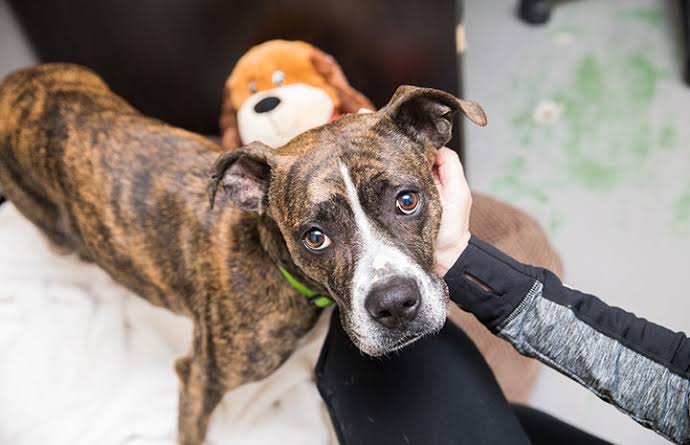Let’s face it—being a cat lover with allergies can feel like a cruel twist of fate. You dream of cuddling up with a purring ball of fur, but your immune system has other plans. Sneezing, itchy eyes, and sniffles tend to follow the dream. But here’s the good news: not all cats are created equal when it comes to allergens.
While no cat is completely hypoallergenic, some breeds produce fewer allergens than others. That means if you’ve got mild to moderate cat allergies, there’s a solid chance you can still enjoy life with a feline friend.
In this ultimate guide, we’re breaking down the top 10 hypoallergenic cat breeds that allergy sufferers swear by—plus tips to make living with cats and allergies a whole lot easier.
Wait, What Causes Cat Allergies in the First Place?
Before we get to the fluffballs, let’s quickly talk science.
The main culprit behind cat allergies is a protein called Fel d 1. It’s found in a cat’s:
- Saliva
- Skin
- Dander (tiny flakes of dead skin)
- Urine (but don’t worry, that’s not usually a cuddle hazard)
When your cat grooms itself—which it does a lot—Fel d 1 spreads all over its fur. From there, it becomes airborne, lands on furniture, or ends up in your nose.
Hypoallergenic cats either:
- Produce less Fel d 1
- Shed less, which means less protein floating around your home
Now, let’s meet the fabulous felines that make life easier for allergy-prone humans.
1. Siberian
Don’t let the fluffy coat fool you. Siberians are surprisingly hypoallergenic. Research shows they produce lower-than-average levels of Fel d 1, even with all that glorious fur.
Why allergy sufferers love them:
- Sweet, gentle, and affectionate
- Adapt well to families
- Have a lush triple coat that’s less prone to shedding than you’d expect
Fun fact: Some breeders even test their Siberians’ Fel d 1 levels so you can pick a low-allergen kitten!
2. Balinese
Nicknamed the “long-haired Siamese,” the Balinese looks elegant but is also one of the lowest Fel d 1 producers out there.
Why allergy sufferers love them:
- Affectionate, chatty, and smart
- Silky coat without an undercoat = less shedding
- Super loyal and bonded to their humans
Bonus: They’re a great choice for people who want a hypoallergenic cat with longer hair.
3. Oriental Shorthair
The Oriental Shorthair is a sleek, stylish, and allergy-friendly breed with a huge personality.
Why allergy sufferers love them:
- Very low shedding
- Tight, short coat means fewer allergens floating around
- Sociable, playful, and a bit of a drama queen (in a good way)
Heads-up: They’re active and vocal—so if you like a quiet lap cat, they might not be your speed.
4. Russian Blue
Mysterious, elegant, and hypoallergenic? The Russian Blue is all three.
Why allergy sufferers love them:
- Their dense double coat actually traps allergens, reducing airborne spread
- They produce less Fel d 1 than many other breeds
- Gentle and reserved, but deeply loyal
Pro tip: Regular brushing keeps their plush coat in top shape and allergen levels down.
5. Bengal
The Bengal looks wild—but don’t worry, they’re house-trained (and allergy-sufferer-approved).
Why allergy sufferers love them:
- Sleek, pelt-like coat doesn’t shed much
- Less grooming = less saliva = fewer allergens
- Energetic and interactive—think dog in a cat’s body
Note: Bengals love water and may try to join you in the shower!
6. Devon Rex
With their giant ears and wavy coats, Devon Rex cats are quirky, lovable, and super low-shed.
Why allergy sufferers love them:
- Sparse fur = less dander
- Produce relatively low amounts of Fel d 1
- Clingy in the best way—these cats love attention
Bathing tip: A quick sponge bath now and then helps control oil buildup and allergens on their skin.
7. Cornish Rex
Even more extreme than the Devon Rex, the Cornish Rex has just the soft, downy undercoat—no outer coat at all.
Why allergy sufferers love them:
- Practically no shedding
- One of the lowest-maintenance coats in the cat world
- Agile, playful, and full of personality
Keep in mind: Because they lack an insulating coat, they love warmth and may seek out cozy nooks (like your lap).
8. Javanese
These cats may be lesser known, but the Javanese brings together beauty, brains, and low-allergen appeal.
Why allergy sufferers love them:
- Single-layer coat means minimal shedding
- Produces less Fel d 1 than average
- Highly intelligent and social—great for interactive households
Fun fact: They come in gorgeous color combinations and love to “talk” to their humans.
9. Sphynx
You probably saw this one coming. The Sphynx, with its famously hairless look, is often assumed to be the mosthypoallergenic cat. But there’s a catch.
Why allergy sufferers love them:
- No hair = no shedding
- Easy to wipe down and clean, reducing dander spread
- Friendly, curious, and loves human attention
What to know: They still produce Fel d 1 (mainly on skin), so frequent baths are a must to remove oil and allergen buildup.
10. Burmese
Short-haired and charming, the Burmese is another great pick for allergy-sensitive homes.
Why allergy sufferers love them:
- Silky coat that sheds very little
- Close bonds with humans—they’re often called “dog-like”
- Fairly low Fel d 1 levels compared to some other breeds
Bonus: They’re cuddly without being overly clingy—a good balance for busy households.
Tips for Living with Cats When You Have Allergies
Even with a hypoallergenic breed, you’ll want to create an allergy-friendly home environment. Here are some proven strategies:
1. Groom Regularly
- Brush your cat often to remove loose fur and dander.
- Wipe them down with a damp cloth daily to minimize allergens.
2. Bathe (If the Cat Allows It!)
- Especially helpful for Sphynx, Rex breeds, and even low-shed cats.
- Use a gentle, pet-safe shampoo once every 2–4 weeks.
3. Use HEPA Filters
- Air purifiers with HEPA filters can dramatically reduce airborne allergens.
- Vacuum with a HEPA-equipped machine at least twice a week.
4. Designate a “Cat-Free” Zone
- Make your bedroom a sanctuary where your allergies can rest.
- Wash your bedding regularly—even if the cat never enters.
5. Wash Your Hands
- After petting or playing, rinse off allergens before touching your face.
Can Allergy Shots or Medication Help?
Absolutely. If you’re not ready to give up on feline companionship, talk to your allergist about immunotherapy (allergy shots). Many cat owners have found that over time, shots reduce their symptoms significantly. Antihistamines and nasal sprays can also help manage reactions when flare-ups hit.
Final Thoughts: Yes, You Can Be a Cat Lover with Allergies
Living with cat allergies doesn’t mean saying goodbye to your dreams of becoming a cat parent. Thanks to these hypoallergenic cat breeds, it’s more possible than ever to share your home with a whiskered friend—without the itchy eyes and endless sneezing.
Of course, every person is different. Spend time with the breed you’re considering before adopting. Visit a breeder, shelter, or cat café and see how your body reacts. And always work with a reputable source—especially if you’re looking for breeds with documented low Fel d 1 levels.
Because at the end of the day, the best cat for you isn’t just one that’s allergy-friendly—it’s one that fits your lifestyle, your personality, and yes, your heart.



